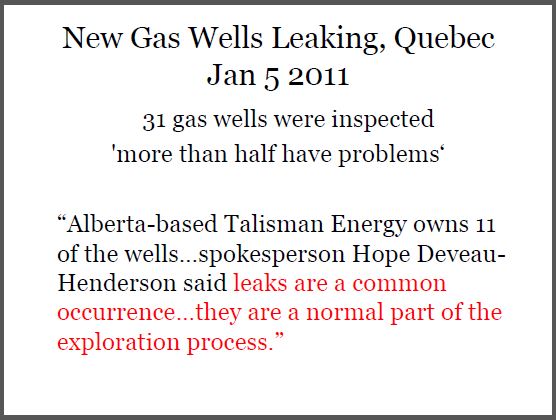Atmospheric pressure affects fugitive emissions, New study underscores need for continuous monitoring of fugitive methane emissions by Nelson Bennett, Oct 18, 2019, biv.com
A new study that demonstrates atmospheric pressure can increase or decrease methane emissions from leaky oil and gas wells underscores the need for better monitoring and measuring in B.C.’s natural gas fields.
Researchers from the University of BC conducted an experiment in which they replicated a leaky gas well to assess how much methane might escape from the soil around it.
Their findings were published in Nature Scientific Reports.
The study found that atmospheric pressure can dramatically affect how much “soil gas” might escape from the ground into the atmosphere.
According to the study, roughly 7% of oil and gas wells may have degraded wellbores that can leak natural gas, which can migrate to the surface [into groundwater] and escape into the atmosphere.
Fugitive emissions from these wells are measured, but not continuously. Most methane measurements are snapshots, and those snapshots can vary dramatically, depending on where – and apparently when – they are taken.
To replicate a leaky gas well, the researchers injected methane into the ground to a depth of 12 metres. The area was then continuously monitored for methane emissions over 24 days, along with atmospheric pressure.
The experiment found that during high-pressure periods, methane emissions decreased to the point where no methane was detected. During periods of low atmospheric pressure, however, there was a spike in how much methane was detected. [Might this be why some people living in frac fields suffer horrific migraines during periods of low pressure when they had never experienced migraines before frac’ing invaded?]
The study underscores the problem with trying to use modeling based on snapshots to determine methane leakage rates.
“Currently, subsurface gas migration is monitored using infrequent or short-term location-restrictive measurements,” Olenka Forde, lead author of the study, said in a press release.
“Our study shows that the magnitude of gas emissions to the atmosphere can depend on atmospheric pressure before and during the time of monitoring, so short-term, one-time measurements may not be representative of average emissions.”
Methane is the Achilles heel of the natural gas and LNG industry. When burned to generate power, natural gas has less than half the CO2 emissions of coal, so there are some fairly obvious environmental benefits.
But because natural gas production can result in fugitive methane emissions, there are concerns that if too much methane is leaking, it could cancel out any environmental benefits of switching from coal to natural gas. [and, toxic pollution during and after frac’ing would additionally cancel out any benefits of switching] Methane does not persist in the atmosphere as long as CO2, but is magnitudes worse in terms of its global warming potential.
It is difficult to measure the actual amount of methane that escapes from a given gas field. A number of studies have produced wildly differing estimates of just how much methane may be escaping from natural gas fields.
Forde says continuous monitoring is needed to get a more accurate picture of just how much methane is actually leaking from gas fields.
“This will help to more accurately detect and evaluate gas migrations and emissions and thus, the risks posed by leaking oil and gas wells,” he said.
The study was funded by Natural Resources Canada, Geoscience BC, the BC Oil and Gas Commission, Natural Sciences and Engineering Council of Canada, and the Canadian Foundation for Innovation.
Barometric-pumping controls fugitive gas emissions from a vadose zone natural gas release by Olenka N. Forde, Aaron G. Cahill, Roger D. Beckie & K. Ulrich Mayer, Oct 1, 2019, Scientific Reports volume 9, Article number: 14080 (2019)
Abstract
Subsurface natural gas release from leaking oil and gas wells is a major environmental concern. Gas migration can cause aquifer contamination, explosive conditions in soil gas, and greenhouse gas emissions. Gas migration is controlled by complex interacting processes, thus constraining the distribution and magnitude of “fugitive gas” emissions remains a challenge. We simulated wellbore leakage in the vadose zone through a controlled release experiment and demonstrate that fugitive gas emissions can be directly influenced by barometric pressure changes.
Decreases in barometric-pressure led to surface gas breakthroughs (>20-fold increase in <24 hours), even in the presence of low-permeability surficial soils.
Current monitoring strategies do not consider the effect of barometric pressure changes on gas migration and may not provide adequate estimates of fugitive gas emissions. Frequent or continuous monitoring is needed to accurately detect and quantify fugitive gas emissions at oil and gas sites with a deep water table.
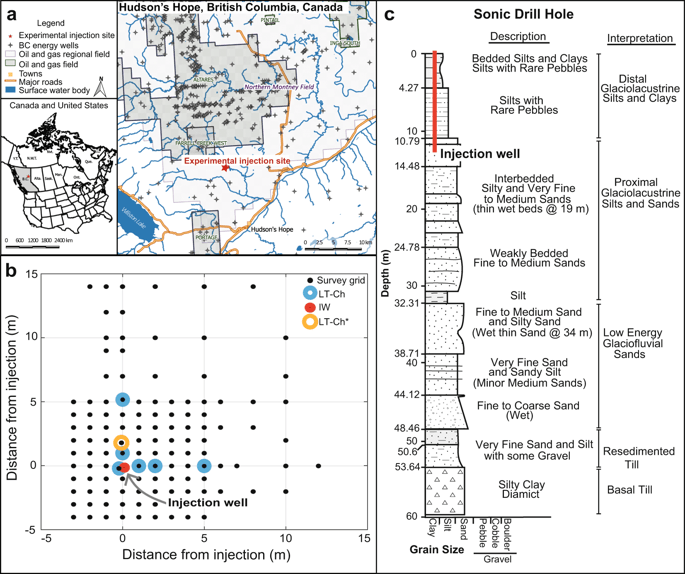
(a) Field site location in Northeastern British Columbia, Canada showing nearby oil and gas development and resource plays. (b) Monitoring network at the field site: black dots represent locations of survey chamber measurements, blue circles indicate locations of continuous measurements with long-term chambers (LT-Ch), and the red circle represents the injection well (IW). The long-term chamber from which the highest CH4 effluxes were measured (Fig. 2) is indicated by (LT-Ch*). (c) Core log collected from a sonic drill hole at the field site, outside of the monitoring grid. The depth of the natural gas injection well (12 m bgs) is indicated with a red line. The glacio-lacustrine deposits at the scale of the injection are comprised primarily of low-permeability silts.
Refer also to:
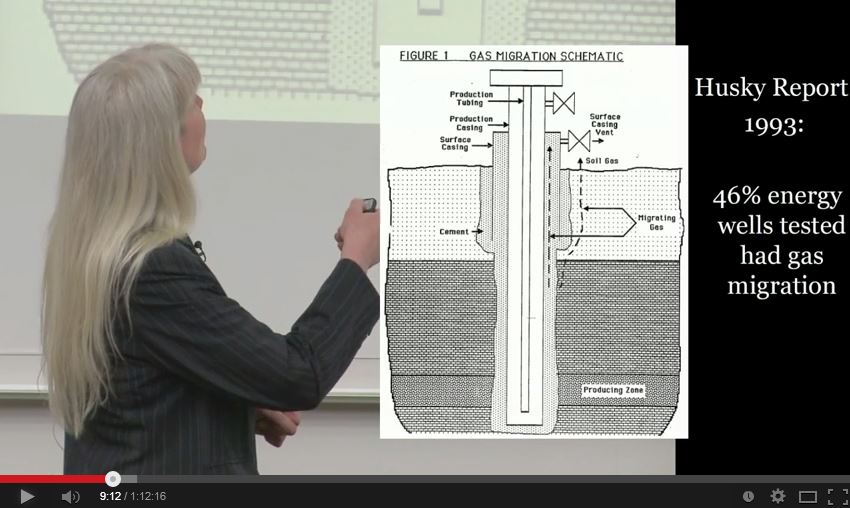
Snap above from Ernst talk at Lethbridge, Alberta

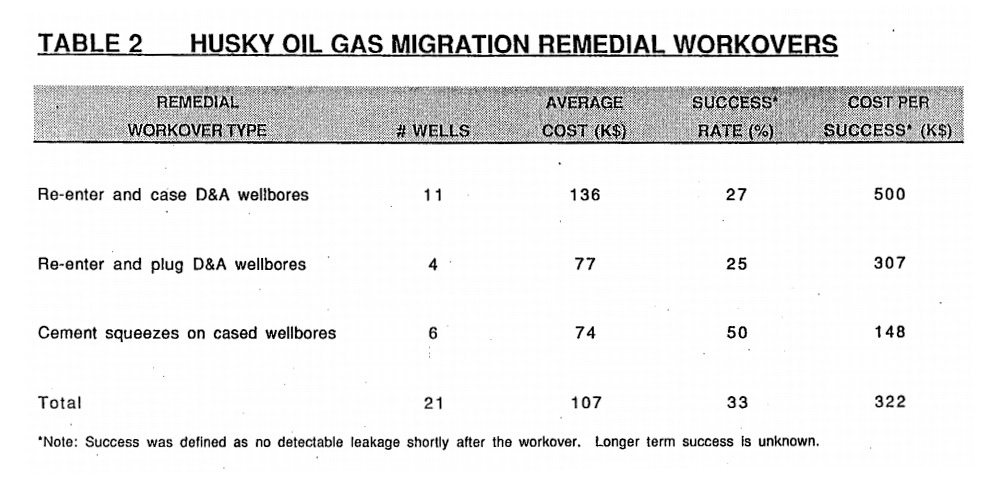
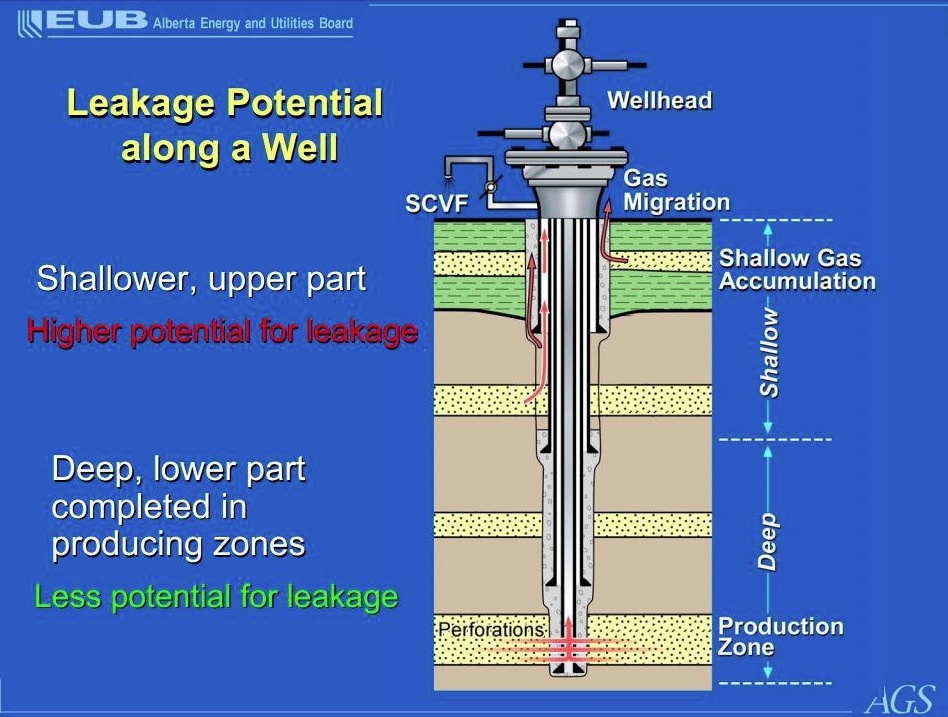
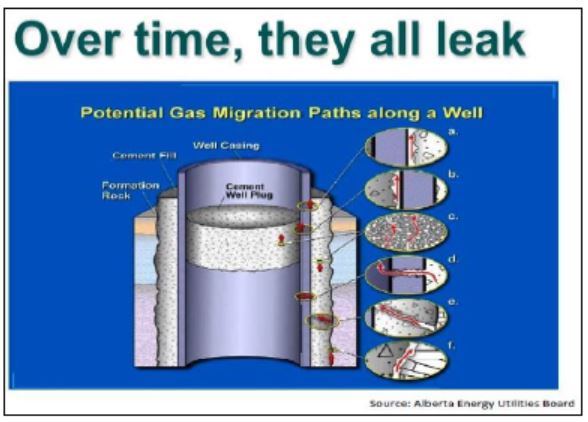
EUB became ERCB and is now AER.
High US methane emissions blamed on leaks; Harvard fracking study show industry methane leaks far higher than official estimates, rings methane alarm bells in Australia
Doctors raise alarm over toxic coal seam gas leaks, Gas Industry Attacks Scientists After Research Finds Triple The Normal Levels Of Methane At Australian Gas Fields
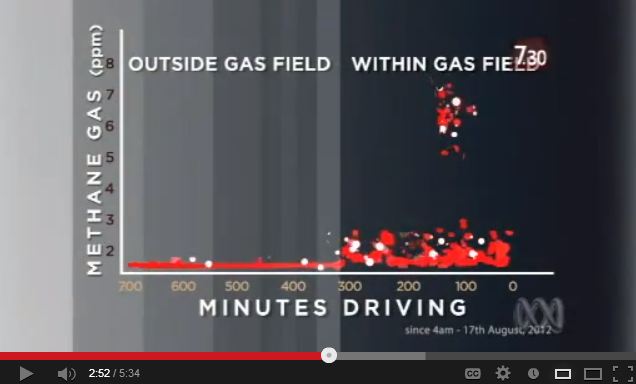
Extremely high’ methane levels found near gas wells
